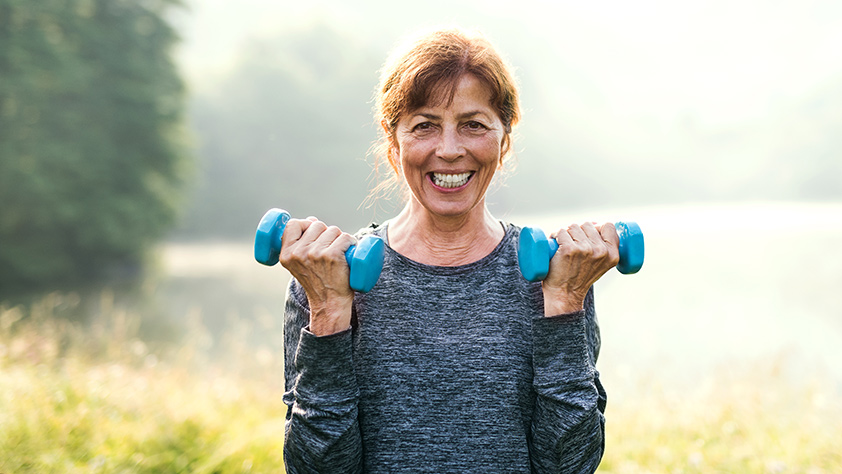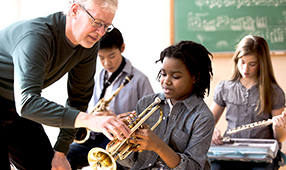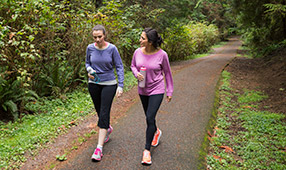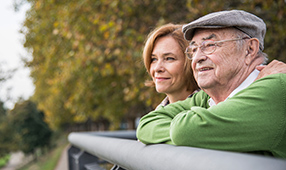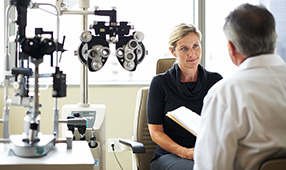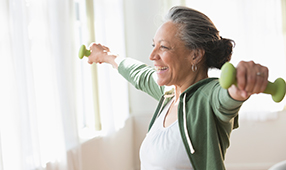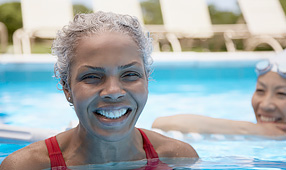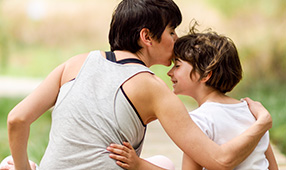Staying active is even more important as you get older—and if you’re already exercising there is no need to slow down just because you’re entering the golden years. Regular exercise not only improves health and wellbeing, but the most recent studies suggest it can also add years to life and even stave off cognitive decline.
“Function is the cornerstone of geriatric medicine. It’s the essential element that defines quality of life,” says Robert Dupee, M.D., chief of the geriatrics service at Tufts Medical Center. “When you maintain relationships and challenge yourself mentally and physically, you’re better equipped to maintain your independence and participate in favorite activities.”
While anyone can exercise, regardless of age or physical limitations, fitness goals can and should change as you age. Before you get started, make sure a doctor looks you over, knows about your exercise plan and gives you a nod of approval. If you’re taking medications, they could affect your heart rate, breathing and your ability to exercise. And if you’re suffering from arthritis or osteoporosis, there may be different activity recommendations.
Then build four types of exercise into your regimen—balance, flexibility, aerobic and resistance. Each of these activities is important for different reasons. When they’re combined, they’ll increase your odds of maintaining quality of life:
1. Cardiovascular
What it is: Cardiovascular activity uses large muscle groups, repetitively (think running, walking, cycling, dancing).
Why it’s important: Aerobic or cardiovascular activity gets your heart pumping. The heart is a muscle, too, and it needs to be challenged to function at its best. A bonus: When you improve endurance you boost energy and promote independence.
Where to start: Experts recommend a minimum of 150 minutes of aerobic exercise 5 days a week. But you don’t have to move for 60 minutes at a time; you can divide it up however you like. “Even a 30-minute walk 5 days a week will suffice,” says Dupee.
2. Strength training
What it is: Strength (or resistance) training builds muscle using your own body weight or machines, dumbbells or elastic bands.
Why it’s important: “It’s especially important to do resistance training as we get older since we lose muscle mass with age,” says Chhanda Dutta, Ph.D., chief of the Clinical Gerontology Branch at the National Institute on Aging. Placing extra pressure on your body with weights and resistance exercises helps prevent bone loss, build muscle mass and enhance balance—all of which are important for fall prevention. Building strength will also help you manage daily activities from lifting objects to getting in and out of a car.
Where to start: Use anything that’s weighted, then lift! You can start with soup cans and work your way up to milk cartons, or you can simply use your body weight to perform squats, push-ups and lunges.
3. Flexibility
What it is: Through bending and stretching, flexibility exercises challenge the body’s joints to move through full range of motion.
Why it’s important: Supple joints help prevent injury. Plus, when you’re able to move your body through full range of motion, you’re better equipped to participate in activities such as driving, tying your shoes and playing with your grandchildren.
Where to start: Simple yoga poses are a great place to start. You can even perform stretches while lying in bed. “Reach up to the ceiling and then lower your arms gently to the bed to invigorate the circulatory and intramuscular systems,” suggests Senior Fitness Instructor Betty Perkins-Carpenter. Another stretch: Turn your head to the right, slowly come back to center and then turn to the right again and see if you can stretch a little further. Then complete the same set on the left.
4. Balance
What it is: Whether you’re standing still or moving around, balance exercises including Tai Chi, yoga, or even just standing on one foot can help improve your posture and keep you on your feet.
Why it’s important: If you frequently feel unsteady, practicing balance exercises is critical, especially if you’re at risk of falling due to age-related declines in strength or sensory-motor functions.
Where to start: Research shows that exercise, including strength and balance training, for as little as 2 hours per week helps maintain and improve your ability to stand on two feet—and participate in daily activities. Stand on one foot (hold onto a sturdy chair for support), walk heel-to-toe, and practice leg raises (slowly lift one leg at a time to the back and hold the position for one second before repeating 10-15 times with each leg).
The good news
Myriad activities overlap all four types of exercise. Pilates, for example, emphasizes balance, flexibility and strength. Similarly, bike riding, combines balance and aerobic activity.
The key, says Dutta, is choosing activities you enjoy and that complement your personality. Then start slow and gradually increase your time and intensity. At first, you may only be able to handle a 10- or 15-minute walk a few times a week, but if you track your progress, you’ll tack on more steps in no time.
Additional resources
- National Institute on Aging: Exercise and Physical Activity: Getting Fit for Life
- Go for Life, from the National Institute on Aging at NIH
- NIH Senior Health
